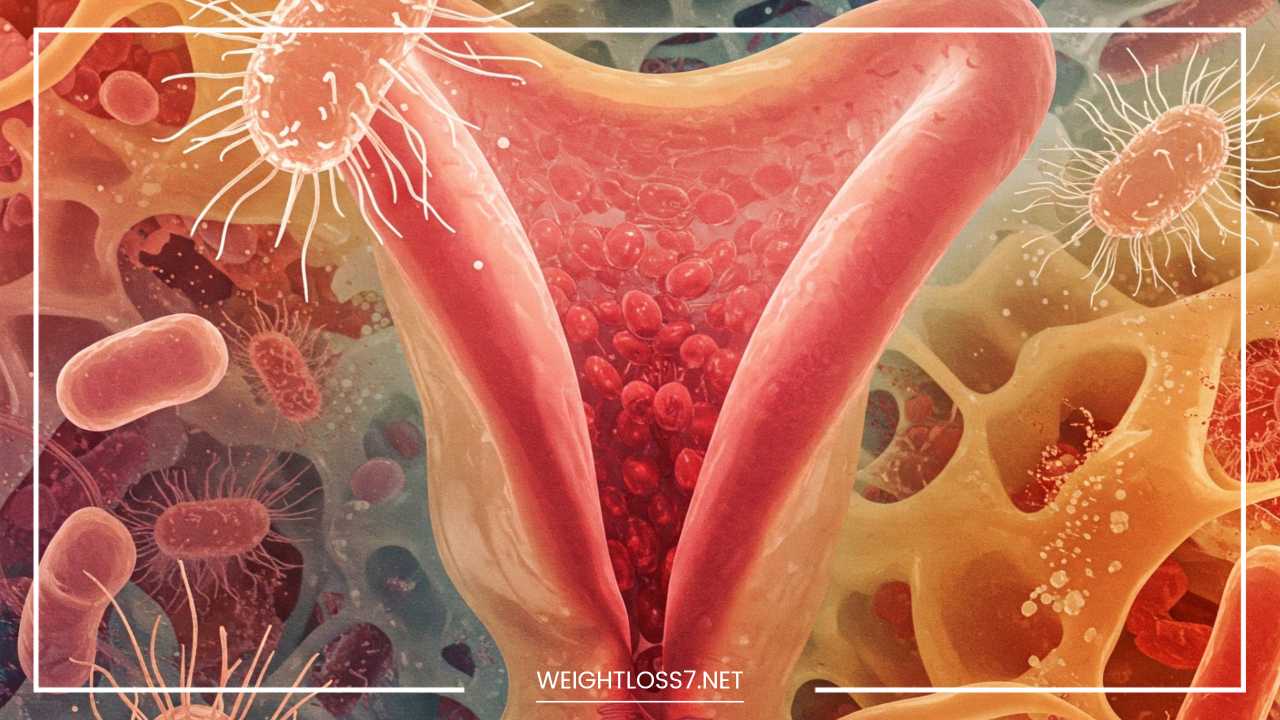Best Probiotics for Vaginal Health

Best Probiotics for Vaginal Health
Probiotics for Vaginal Health: Nurturing Your Inner Ecosystem
The delicate balance of the human body is a marvel of nature, a complex interplay of cells, tissues, and a vast community of microorganisms.
While much attention is often paid to the gut microbiome, another crucial ecosystem resides within the female reproductive tract: the vaginal microbiome.
This intricate world of bacteria, fungi, and viruses plays a vital role in maintaining vaginal health, preventing infections, and contributing to overall well-being.
In recent years, the concept of probiotics – live microorganisms that, when administered in adequate amounts, confer a health benefit on the host – has gained significant traction in various areas of health, including gut health.
But can these beneficial bacteria also play a role in supporting and maintaining a healthy vaginal microbiome? The answer, supported by a growing body of research, is a resounding yes.
This comprehensive article delves into the fascinating world of probiotics and their potential benefits for vaginal health.
We will explore the intricacies of the vaginal microbiome, understand the common challenges women face in maintaining its delicate balance, and examine how probiotics can be a valuable tool in promoting and restoring vaginal well-being.
Understanding the Vaginal Microbiome: A Delicate Ecosystem
The vagina is not a sterile environment. Instead, it is home to a diverse community of microorganisms, collectively known as the vaginal microbiome or vaginal microbiota.
This ecosystem is dominated by bacteria, with various species of Lactobacillus typically holding the majority. These beneficial bacteria play a crucial role in maintaining a healthy vaginal environment through several key mechanisms.
Key Functions of the Vaginal Microbiome
- Lactic Acid Production: Lactobacillus bacteria ferment glycogen, a type of sugar found in vaginal cells, to produce lactic acid. This lactic acid lowers the vaginal pH to a slightly acidic range (typically between 3.8 and 4.5). This acidic environment acts as a natural defense mechanism, inhibiting the growth of many harmful bacteria and fungi that thrive in more neutral or alkaline conditions.
- Production of Antimicrobial Substances: Certain Lactobacillus species produce other antimicrobial substances, such as hydrogen peroxide and bacteriocins. Hydrogen peroxide can directly kill or inhibit the growth of various pathogens, while bacteriocins are small peptides that specifically target and kill other bacteria.
- Competition with Pathogens: The sheer number of Lactobacillus bacteria in a healthy vaginal microbiome creates a competitive environment for resources and adhesion sites. This makes it difficult for pathogenic microorganisms to colonize and establish an infection.
- Modulation of the Immune Response: The vaginal microbiome interacts with the local immune system, helping to train and regulate immune responses. This can contribute to preventing overgrowth of harmful microbes and reducing inflammation.
The Importance of Balance: When the Ecosystem is Disrupted
The delicate balance of the vaginal microbiome can be easily disrupted by various internal and external factors, leading to a condition known as vaginal dysbiosis.
This imbalance, often characterized by a decrease in beneficial Lactobacillus species and an overgrowth of other bacteria or fungi, can result in a range of uncomfortable symptoms and increase the risk of vaginal infections. Common factors that can disrupt the vaginal microbiome include:
Internal and External Factors that Disrupt the Vaginal Microbiome
- Antibiotics: While essential for treating bacterial infections elsewhere in the body, antibiotics can also inadvertently kill beneficial bacteria in the vagina, including Lactobacillus. This can create an opportunity for other microorganisms to proliferate.
- Douching: Douching, the practice of rinsing the vagina with water or other fluids, is strongly discouraged by healthcare professionals. It disrupts the natural balance of the vaginal microbiome by washing away beneficial bacteria and altering the pH.
- Hormonal Changes: Fluctuations in hormone levels, such as those that occur during menstruation, pregnancy, and menopause, can affect the vaginal environment and the composition of the microbiome.
- Sexual Activity: While generally healthy, sexual activity can temporarily alter the vaginal pH and introduce new microorganisms.
- Stress: Chronic stress can impact the immune system and potentially influence the vaginal microbiome.
- Diet: While research is ongoing, some studies suggest that diet may play a role in the composition and health of the vaginal microbiome.
- Certain Medical Conditions: Conditions like diabetes can increase the risk of vaginal infections and potentially affect the microbiome.
- Use of Certain Products: Soaps, detergents, and feminine hygiene products containing harsh chemicals can irritate the vaginal area and disrupt the microbiome.
Common Vaginal Health Issues Linked to Microbiome Imbalance
Disruptions in the vaginal microbiome are often associated with common vaginal health issues, including:
- Bacterial Vaginosis (BV): BV is the most common vaginal condition in women of reproductive age. It occurs when there is an overgrowth of anaerobic bacteria and a decrease in Lactobacillus species. Symptoms can include a thin, grayish-white discharge with a fishy odor, itching, and burning. However, many women with BV experience no symptoms. Untreated BV can increase the risk of sexually transmitted infections (STIs) and complications during pregnancy.
- Yeast Infections (Vulvovaginal Candidiasis): Yeast infections are caused by an overgrowth of Candida, a type of fungus that naturally resides in the vagina in small amounts. Symptoms typically include intense itching, burning, redness, and a thick, white, cottage cheese-like discharge. While often not serious, recurrent yeast infections can be bothersome.
- Trichomoniasis: This is a sexually transmitted infection caused by a parasite called Trichomonas vaginalis. While not directly linked to the bacterial microbiome, an imbalanced vaginal environment might make women more susceptible to this infection. Symptoms can include a frothy, yellow-green discharge with a foul odor, itching, burning, and pain during urination or intercourse.
How Probiotics Can Support Vaginal Health: Restoring the Balance
The concept behind using probiotics for vaginal health is to introduce beneficial bacteria, particularly Lactobacillus strains, to help restore and maintain a healthy microbial balance. Probiotics can exert their beneficial effects through several mechanisms:
Mechanisms by Which Probiotics Help Vaginal Health
- Direct Colonization: When probiotics containing specific Lactobacillus strains are introduced into the vagina (either orally or vaginally), they can potentially colonize the vaginal lining. This helps to increase the population of beneficial bacteria and re-establish their dominance.
- Lactic Acid Production: Probiotic Lactobacillus strains can produce lactic acid, contributing to the maintenance of an acidic vaginal pH. This acidic environment inhibits the growth of many pathogenic bacteria and fungi.
- Production of Antimicrobial Substances: Similar to the naturally occurring Lactobacillus in a healthy vagina, probiotic strains can also produce antimicrobial substances like hydrogen peroxide and bacteriocins, further inhibiting the growth of harmful microorganisms.
- Competition and Exclusion: The introduction of a large number of beneficial probiotic bacteria can create competition for nutrients and adhesion sites on the vaginal lining, making it more difficult for pathogens to colonize and thrive.
- Immune Modulation: Some probiotic strains can interact with the local immune system in the vagina, helping to regulate immune responses and reduce inflammation. This can contribute to a healthier vaginal environment.
Types of Probiotics and Delivery Methods for Vaginal Health
Probiotics for vaginal health are available in various forms and contain different strains of bacteria. The most common types include:
- Oral Probiotics: These are taken by mouth and travel through the digestive system. While the exact mechanism by which oral probiotics reach the vagina is still being researched, some studies suggest that certain strains can migrate from the gut to the vagina. This likely involves a process called the “gut-vagina axis.”
- Vaginal Suppositories or Tablets: These are inserted directly into the vagina, allowing for a more targeted delivery of beneficial bacteria to the site where they are needed most. Vaginal probiotics often contain higher concentrations of specific Lactobacillus strains known to be beneficial for vaginal health.
When choosing a probiotic for vaginal health, it’s important to consider the specific strains of bacteria it contains. Research suggests that certain Lactobacillus species are particularly effective in promoting vaginal health, including:
- Lactobacillus crispatus: This strain is often found in high numbers in the vaginas of healthy women and is known for its strong lactic acid production.
- Lactobacillus jensenii: Similar to L. crispatus, this strain also produces lactic acid and contributes to maintaining a low vaginal pH.
- Lactobacillus gasseri: This strain has been shown to have beneficial effects against various vaginal pathogens.
- Lactobacillus rhamnosus GR-1® and Lactobacillus reuteri RC-14®: These specific strains have been extensively studied and shown to be effective in supporting vaginal health when taken orally, demonstrating their ability to migrate from the gut to the vagina.
Scientific Evidence and Research on Probiotics for Vaginal Health
The scientific evidence supporting the use of probiotics for vaginal health is growing, but it’s important to note that research is ongoing, and results can vary depending on the specific strains, dosage, and delivery method used. Here’s a summary of the current evidence:
- Bacterial Vaginosis (BV): Several studies have investigated the use of probiotics for the prevention and treatment of BV. Some research suggests that vaginal probiotics containing specific Lactobacillus strains can be effective in treating BV, particularly when used in conjunction with or after antibiotic treatment. Oral probiotics containing L. rhamnosus GR-1® and L. reuteri RC-14® have also shown promise in preventing recurrent BV. However, more large-scale, well-designed studies are needed to confirm these findings and establish clear guidelines.
- Yeast Infections (Vulvovaginal Candidiasis): The evidence for the effectiveness of probiotics in treating active yeast infections is less robust compared to BV. While some studies have shown potential benefits in reducing symptoms and preventing recurrence, particularly with oral probiotics containing specific Lactobacillus strains, more research is needed to draw definitive conclusions.
- Maintaining a Healthy Vaginal Microbiome: Studies have shown that both oral and vaginal probiotics can help to increase the levels of beneficial Lactobacillus species in the vagina and maintain a healthy vaginal microbiome. This may be particularly beneficial for women who experience frequent disruptions to their vaginal balance.
- Other Vaginal Health Issues: Research is also exploring the potential role of probiotics in addressing other vaginal health issues, such as urinary tract infections (UTIs) and improving overall vaginal comfort. However, more studies are needed in these areas.
Choosing the Right Probiotic for Your Needs
With the increasing availability of probiotic products marketed for vaginal health, it can be challenging to choose the right one. Here are some factors to consider:
- Specific Strains: Look for products that contain specific Lactobacillus strains that have been shown in research to be beneficial for vaginal health, such as L. crispatus, L. jensenii, L. gasseri, L. rhamnosus GR-1®, and L. reuteri RC-14®.
- CFU Count: The CFU (colony-forming units) count indicates the number of live and active microorganisms in a dose. While a higher CFU count isn’t always better, ensure the product contains an adequate dose as suggested by research or the manufacturer.
- Delivery Method: Consider whether an oral or vaginal probiotic is more suitable for your needs. Vaginal probiotics may offer a more direct approach for certain issues, while oral probiotics may be more convenient for long-term maintenance.
- Quality and Reputation: Choose products from reputable manufacturers that adhere to quality control standards. Look for products that are third-party tested for potency and purity.
- Intended Use: Consider whether you are looking for a probiotic to help treat an active infection (in conjunction with conventional treatment), prevent recurrent infections, or simply maintain overall vaginal health.
- Consult Your Healthcare Provider: It’s always best to discuss your specific needs with your doctor or a qualified healthcare professional. They can provide personalized recommendations based on your medical history and symptoms.
Incorporating Probiotics into Your Routine: Practical Tips
If you decide to incorporate probiotics into your routine for vaginal health, here are some practical tips:
- Follow Product Instructions: Always adhere to the dosage and usage instructions provided by the manufacturer.
- Consistency is Key: For optimal benefits, it’s generally recommended to use probiotics consistently over time.
- Consider Timing: If taking oral antibiotics, it’s often recommended to take probiotics a few hours after the antibiotic dose to minimize the potential for the antibiotic to kill the probiotic bacteria.
- Store Properly: Store probiotic products according to the manufacturer’s instructions, as improper storage can reduce their effectiveness.
- Be Patient: It may take some time to notice the effects of probiotics. Be patient and consistent with their use.
Beyond Probiotics: Other Lifestyle Factors for Vaginal Health
While probiotics can be a valuable tool, they are just one piece of the puzzle when it comes to maintaining optimal vaginal health. Other important lifestyle factors include:
- Practice Good Hygiene: Gently wash the external vaginal area (vulva) with mild, unscented soap and water. Avoid douching, as it disrupts the natural balance of the vaginal microbiome.
- Wear Breathable Underwear: Opt for cotton underwear, which allows for better airflow and helps to prevent moisture buildup, which can promote the growth of harmful microorganisms.
- Avoid Irritants: Steer clear of harsh soaps, detergents, scented feminine hygiene products, and tight-fitting clothing that can irritate the vaginal area.
- Practice Safe Sex: Use barrier methods like condoms to protect against sexually transmitted infections, which can disrupt vaginal health.
- Maintain a Balanced Diet: A healthy diet rich in fruits, vegetables, and whole grains can support overall health, including the health of your vaginal microbiome.
- Manage Stress: Chronic stress can impact your immune system, so finding healthy ways to manage stress is important.
Potential Side Effects and Precautions
Probiotics are generally considered safe for most healthy women. However, some individuals may experience mild and temporary side effects, such as digestive upset (gas, bloating) with oral probiotics, particularly when starting a new product. Vaginal probiotics may occasionally cause mild local irritation.
It’s important to consult with your doctor before using probiotics, especially if you have any underlying health conditions or are taking immunosuppressant medications.
Women with weakened immune systems should exercise caution when using probiotics. If you experience any persistent or severe side effects, discontinue use and consult your healthcare provider.
Final Thoughts: Embracing the Power of Probiotics for Vaginal Well-being
The vaginal microbiome is a dynamic and crucial ecosystem that plays a vital role in women’s health. Disruptions to this delicate balance can lead to uncomfortable symptoms and increase the risk of infections.
Probiotics, with their ability to introduce beneficial bacteria and support a healthy vaginal environment, offer a promising avenue for promoting and maintaining vaginal well-being.
While research continues to evolve, the evidence suggests that specific strains of Lactobacillus, delivered orally or vaginally, can be valuable tools in preventing and managing certain vaginal health issues, as well as in maintaining a healthy vaginal microbiome.
By understanding the intricacies of the vaginal ecosystem, making informed choices about probiotic use, and adopting healthy lifestyle practices, women can actively nurture their inner ecosystem and contribute to their overall health and well-being.
Remember to always consult with your healthcare provider for personalized advice and guidance on the best approach for your individual needs.

















